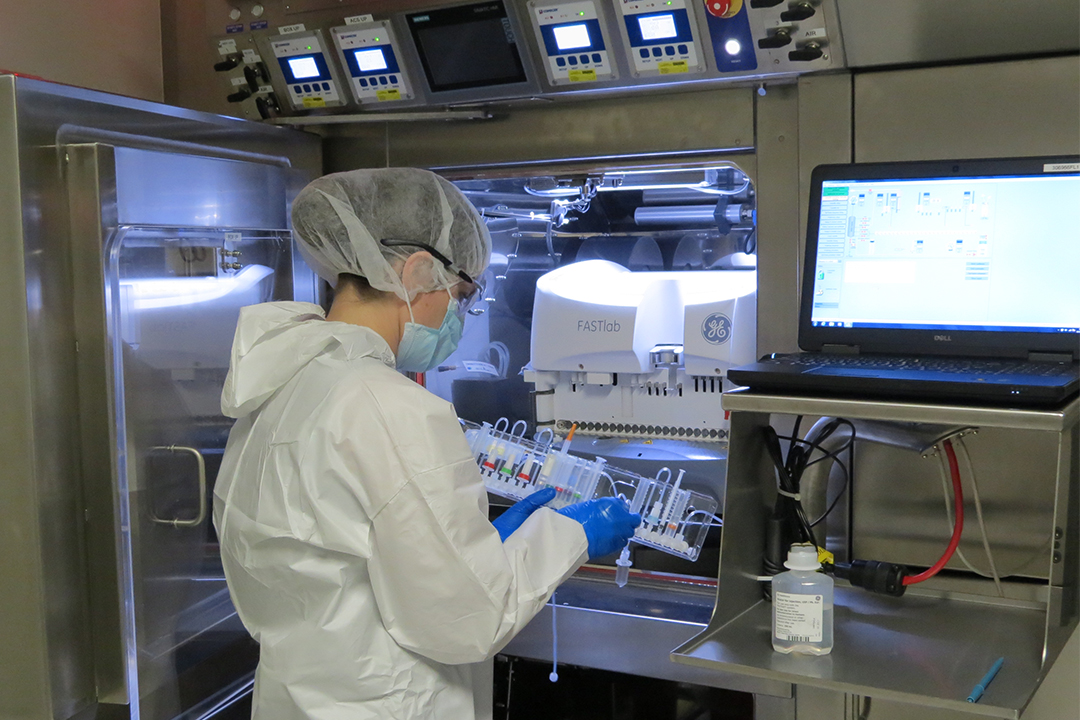
Cyclotron at U of S produces first radioisotopes for research, soon to start supplying for patients
SASKATOON -The Saskatchewan Centre for Cyclotron Sciences at the University of Saskatchewan has passed two major milestones as it prepares to enter full operations: clearance from Health Canada to begin supplying radioisotopes to Royal University Hospital and the first use of radioisotopes produced by the cyclotron in research.
"These are tremendous achievements, for the Fedoruk Centre and our cyclotron team, for everyone who has been involved in the cyclotron project at the University of Saskatchewan and our partners in government," said Neil Alexander, Executive Director of the Fedoruk Centre which manages the cyclotron. "Most importantly these achievements signal the beginning of the operational life of Saskatchewan's cyclotron, providing radioisotopes for use by researchers and soon for use by physicians to diagnose Saskatchewan patients."
"Having radioisotopes available to us opens up a whole new avenue of research," said researcher Murray Pettitt, a member of the U of S Prostate Imaging Group, a team of 11 researchers and their students from the Colleges of Medicine, Agriculture and Bioresources and the Western College of Veterinary Medicine.
The team recently became the first research users of radioisotopes from the cyclotron, adding imaging with radioisotopes to their tool box to study prostate enlargement and prostate cancer. They are working to better understand the structural changes that lead to prostate enlargement and prostate cancer in dogs, one of the few animals besides humans that develop the condition.
The Saskatchewan Centre for Cyclotron Sciences was notified by Health Canada on May 20 that the cyclotron can commence supplying radioisotope for use in PET-CT scans for patients at Royal University Hospital, expected to begin in June.
Radioisotopes are produced by irradiating a target material with a beam of particles produced by the cyclotron. Nuclear reactions between the cyclotron beam and atoms in the target material make the radioisotopes, which are then joined to drug molecules to make an imaging agent. After the imaging agent is injected into a patient the radioisotope decays, releasing energy that can be detected and used to see biological processes in action, ranging from where cancer cells are lurking and if treatments are being effective, to how plants store nutrients and respond to environmental stresses.
Construction of the $25-million facility began in August 2013 and was completed in November 2014. It was funded by the Government of Saskatchewan, Western Economic Diversification Canada and the Fedoruk Centre. Owned by the University of Saskatchewan, the Saskatchewan Centre for Cyclotron Sciences is operated by the Fedoruk Centre.
-30-
Additional information about the Saskatchewan Centre for Cyclotron Sciences, including a short video is available at http://www.fedorukcentre.ca/facilities/cyclotron.php
Contact:
Matthew Dalzell
Partnerships Manager
Sylvia Fedoruk Canadian Centre for Nuclear Innovation
Phone: (306) 966-3379 Cell: (306) 280-6245
matthew.dalzell@fedorukcentre.ca
Jennifer Thoma
Media Relations Specialist
University of Saskatchewan
306-966-1851
jennifer.thoma@usask.ca

